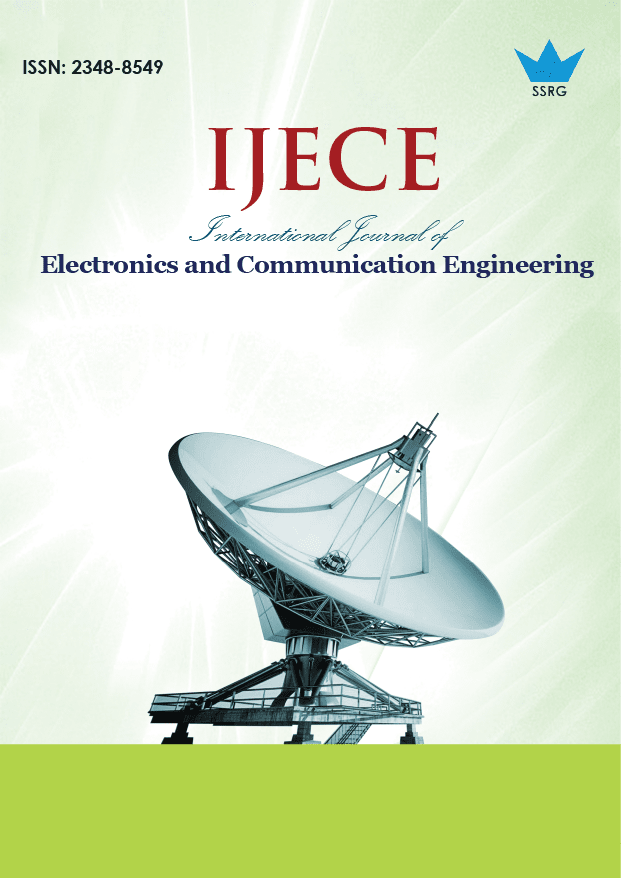EBiGRU: An Enhanced Bidirectional GRU-Based Multi-scale Neural Network for Intelligent Waste Segregation

| International Journal of Electronics and Communication Engineering |
| © 2025 by SSRG - IJECE Journal |
| Volume 12 Issue 7 |
| Year of Publication : 2025 |
| Authors : Anupriya, Ratish Kumar |
How to Cite?
Anupriya, Ratish Kumar, "EBiGRU: An Enhanced Bidirectional GRU-Based Multi-scale Neural Network for Intelligent Waste Segregation," SSRG International Journal of Electronics and Communication Engineering, vol. 12, no. 7, pp. 62-73, 2025. Crossref, https://doi.org/10.14445/23488549/IJECE-V12I7P106
Abstract:
The demand for effective waste management systems increases with evolving technology, and an intelligent system is needed to classify and segregate waste easily and optimally. With this focus, this paper proposes a novel method of waste classification that utilizes the benefits of Convolutional Neural Networks (CNN) to improve the performance of Bidirectional Gated Recurrent Units (BiGRU) and develop an Enhanced BiGRU (EBiGRU). Here, a novel Multi-Scale Linear Aggregation Network (MLAN) in CNN is a backbone for BiGRU and extracts scale-invariant features to understand the local and global context of the information in the captured images. These feature maps are then sequentially embedded with customized BiGRU to define the dependencies between forward and backwards directions. This combination not only improves the feature representation but also enhances contextual awareness and makes the model robust to scale variations. The proposed system is evaluated using two separate datasets (Waste Segregation Image and Garbage Classification dataset) and one with their combination. The performance is computed based on accuracy, loss, and correct classification rate, which declares the efficacy of the proposed method and presents its robustness.
Keywords:
Waste classification, Deep Learning, BiGRU, EBiGRU, Multi-scale features.
References:
[1] A. Kavithamani et al., “Automatic Waste Segregating System and Smart Bin,” Journal of Survey in Fisheries Sciences, vol. 10, no. 4S, pp. 1922-1929, 2023.
[Google Scholar]
[2] Lynda Andeobu, Santoso Wibowo, and Srimannarayana Grandhi, “Artificial Intelligence Applications for Sustainable Solid Waste Management Practices in Australia: A Systematic Review,” Science of the Total Environment, vol. 834, 2022.
[CrossRef] [Google Scholar] [Publisher Link]
[3] C. Chang, Garbage Classification, Dataset Kaggle, 2018.
[CrossRef] [Publisher Link]
[4] Pranali G. Chavhan et al., “Automatic Waste Segregator Based on IoT & ML Using Keras model and Streamlit,” International Journal of Intelligent Systems and Applications in Engineering, vol. 12, no. 2, pp. 787-799, 2024.
[Google Scholar] [Publisher Link]
[5] Sehrish Munawar Cheema, Abdul Hannan, and Ivan Miguel Pires, “Smart Waste Management and Classification Systems Using Cutting Edge Approach,” Sustainability, vol. 14, no. 16, pp. 1-21, 2022.
[CrossRef] [Google Scholar] [Publisher Link]
[6] Aashi Dutt, and Anuj Dutt, Waste Segregation Image Dataset, Dataset Kaggle, 2023.
[CrossRef] [Google Scholar] [Publisher Link]
[7] Yun Arifatul Fatimah et al., “Industry 4.0 based Sustainable Circular Economy approach for Smart Waste Management System to Achieve Sustainable Development Goals: A Case Study of Indonesia,” Journal of Cleaner Production, vol. 269, pp. 1-36, 2020.
[CrossRef] [Google Scholar] [Publisher Link]
[8] Harsh Kapadia et al., “Dry Waste Segregation using Seamless Integration of Deep Learning and Industrial Machine Vision,” 2021 IEEE International Conference on Electronics, Computing and Communication Technologies (CONECCT), Bangalore, India, pp. 1-7, 2021.
[CrossRef] [Google Scholar] [Publisher Link]
[9] Surendra Kumar Koganti et al., “Deep Learning based Automated Waste Segregation System based on Degradability,” 2021 Second International Conference on Electronics and Sustainable Communication Systems (ICESC), Coimbatore, India, pp. 1953-1956, 2021.
[CrossRef] [Google Scholar] [Publisher Link]
[10] Meena Malik et al., “Waste Classification for Sustainable Development Using Image Recognition with Deep Learning Neural Network Models,” Sustainability, vol. 14, no. 12, pp. 1-18, 2022.
[CrossRef] [Google Scholar] [Publisher Link]
[11] L. Megalan Leo et al., “An IoT Based Automatic Waste Segregation and Monitoring System,” 2022 Second International Conference on Artificial Intelligence and Smart Energy (ICAIS), Coimbatore, India, pp. 1262-1267, 2022.
[CrossRef] [Google Scholar] [Publisher Link]
[12] Md. Shahariar Nafiz et al., “ConvoWaste: An Automatic Waste Segregation Machine Using Deep Learning,” 2023 3rd International Conference on Robotics, Electrical and Signal Processing Techniques (ICREST), Dhaka, Bangladesh, pp. 181-186, 2023.
[CrossRef] [Google Scholar] [Publisher Link]
[13] Siddharth Nair et al., “Automatic Waste Segregation System: An IOT Approach,” Information and Communication Technology for Competitive Strategies, pp. 635-641, 2022.
[CrossRef] [Google Scholar] [Publisher Link]
[14] Rejina Parvin et al., “Automatic Segregation of Household Waste using Machine Learning Approaches,” 2022 International Conference on Edge Computing and Applications (ICECAA), Tamilnadu, India, pp. 1243-1248, 2022.
[CrossRef] [Google Scholar] [Publisher Link]
[15] Prince Puthussery et al., “Green Dream: A Deep Learning based Real-Time Model for Automatic Waste Segregation from Video Streams,” International Conference on Humans and Technology: A Holistic and Symbiotic Approach to Sustainable Development, Kerala, India, pp. 1-11, 2022.
[CrossRef] [Google Scholar] [Publisher Link]
[16] Abdullah Al Rakib et al., “Dry and Wet Waste Segregation and Management System,” European Journal of Engineering and Technology Research, vol. 6, no. 5, pp. 129-133, 2021.
[CrossRef] [Google Scholar] [Publisher Link]
[17] Khandoker Samaher Salem et al., “A Critical Review of Existing and Emerging Technologies and Systems to Optimize Solid Waste Management for Feedstocks and Energy Conversion,” Matter, vol. 6, no. 10, pp. 3348-3377, 2023.
[CrossRef] [Google Scholar] [Publisher Link]
[18] Rattan Sharma, “Leveraging AI and IoT for Sustainable Waste Management,” Sustainable Development through Machine Learning, AI and IoT, Delhi, India, pp. 136-150, 2023.
[CrossRef] [Google Scholar] [Publisher Link]
[19] R. Shreeshayana et al., “Ergonomic Automated Dry and Wet Waste Segregation and Compost Production for Innovative Waste Management,” 2022 IEEE 3rd Global Conference for Advancement in Technology (GCAT), Bangalore, India, pp. 1-6, 2022.
[CrossRef] [Google Scholar] [Publisher Link]
[20] Elio Strollo et al., “An AI-Based Approach to Automatic Waste Sorting,” International Conference on Human-Computer Interaction, Copenhagen, Denmark, pp. 662-669, 2020.
[CrossRef] [Google Scholar] [Publisher Link]
[21] Dhiraj Sunehra et al., “Implementation of an Automatic Waste Segregator System using Arduino Uno,” 2021 6th International Conference for Convergence in Technology (I2CT), Maharashtra, pp. 1-6, 2021.
[CrossRef] [Google Scholar] [Publisher Link]
[22] V.P. Ajay et al., “Automatic Waste Segregation and Management,” 2020 International Conference on Computer Communication and Informatics (ICCCI), Coimbatore, India, pp. 1-5, 2020.
[CrossRef] [Google Scholar] [Publisher Link]

 10.14445/23488549/IJECE-V12I7P106
10.14445/23488549/IJECE-V12I7P106